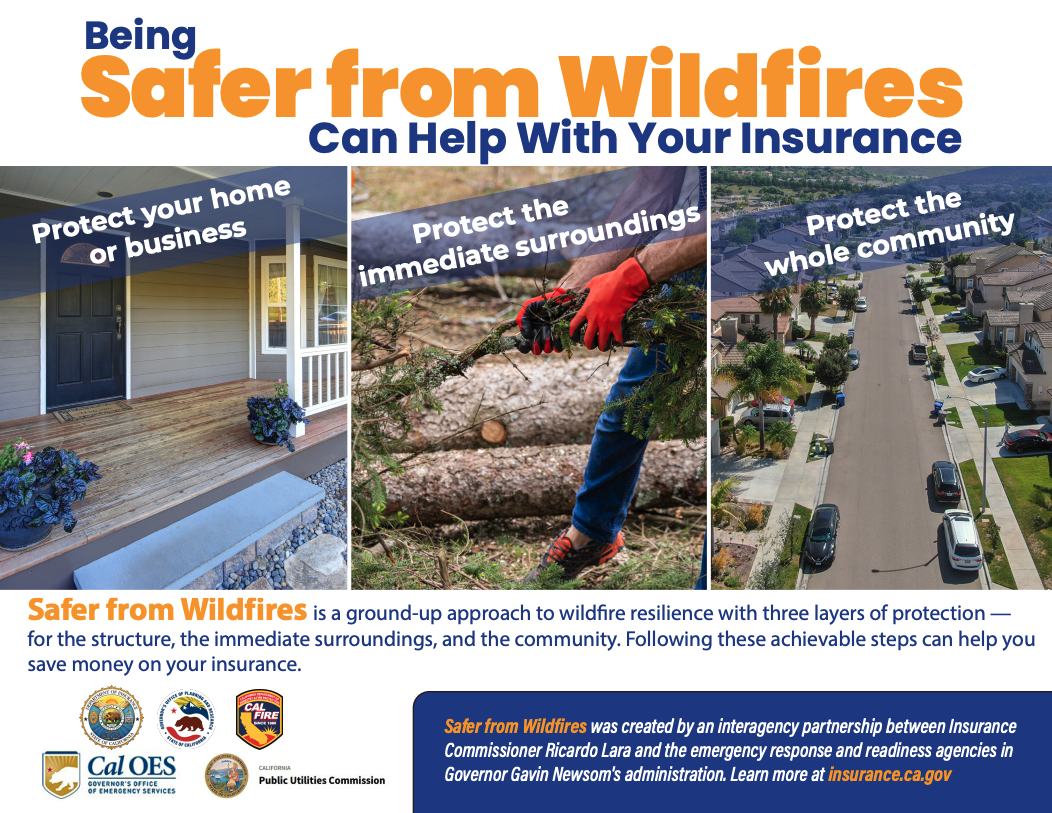Wildfire Preparedness and Insurance Challenges
An Essential Update for Homeowners
By Chris Pinto, Alameda County Coordinator and DFSC Advisor
Safer From Wildfires is a resource from insurance.ca.gov.
Creating defensible space and hardening homes are commendable actions that significantly contribute to community safety and effective fire suppression. However, adhering to state or local defensible-space codes doesn’t guarantee that an insurance company will issue or renew a fire insurance policy.
Insurers rely on complex wildfire risk models rather than solely on code compliance. These models evaluate various factors beyond immediate defensible space, such as:
The home’s location is in a high-risk zone.
Regional fire history.
Proximity to fire stations.
General assumptions about the surrounding area.
Insurance underwriting guidelines often differ from public-safety regulations, allowing insurers to impose stricter eligibility criteria.
What Homeowners Can Do
Homeowners can take several proactive steps to enhance their property’s resilience against disasters while navigating the complexities of insurance coverage. First and foremost, documenting all efforts in creating defensible space and hardening homes is crucial; homeowners should maintain a detailed record of these improvements through photos, dates, and receipts, showcasing their commitment to safety.
Additionally, maintaining open communication with insurance providers about any upgrades or delays in mitigation efforts is essential for ensuring that policies remain current and reflective of the home’s risk profile. Beyond standard defensible space measures, homeowners are encouraged to explore home-hardening strategies that can significantly influence insurers’ risk assessments—these include installing ignition-resistant roofing materials, utilizing ember-resistant vents, and applying noncombustible siding.
Furthermore, if conventional insurers deny coverage due to perceived risks, homeowners should not hesitate to explore alternative options such as specialty insurers that cater specifically to high-risk properties or participate in state-run programs like the FAIR Plan, which serves as an insurer of last resort. By taking these comprehensive steps and considering all available options, homeowners can better protect their investments while enhancing their peace of mind in the face of potential threats.
Conclusion
While creating defensible space is crucial for life safety, it isn’t a complete solution for resolving insurance challenges. Homeowners should proactively reduce wildfire risks on their property while actively managing their insurance coverage by discussing specific underwriting factors with their agent. See further resources at United Policyholders

